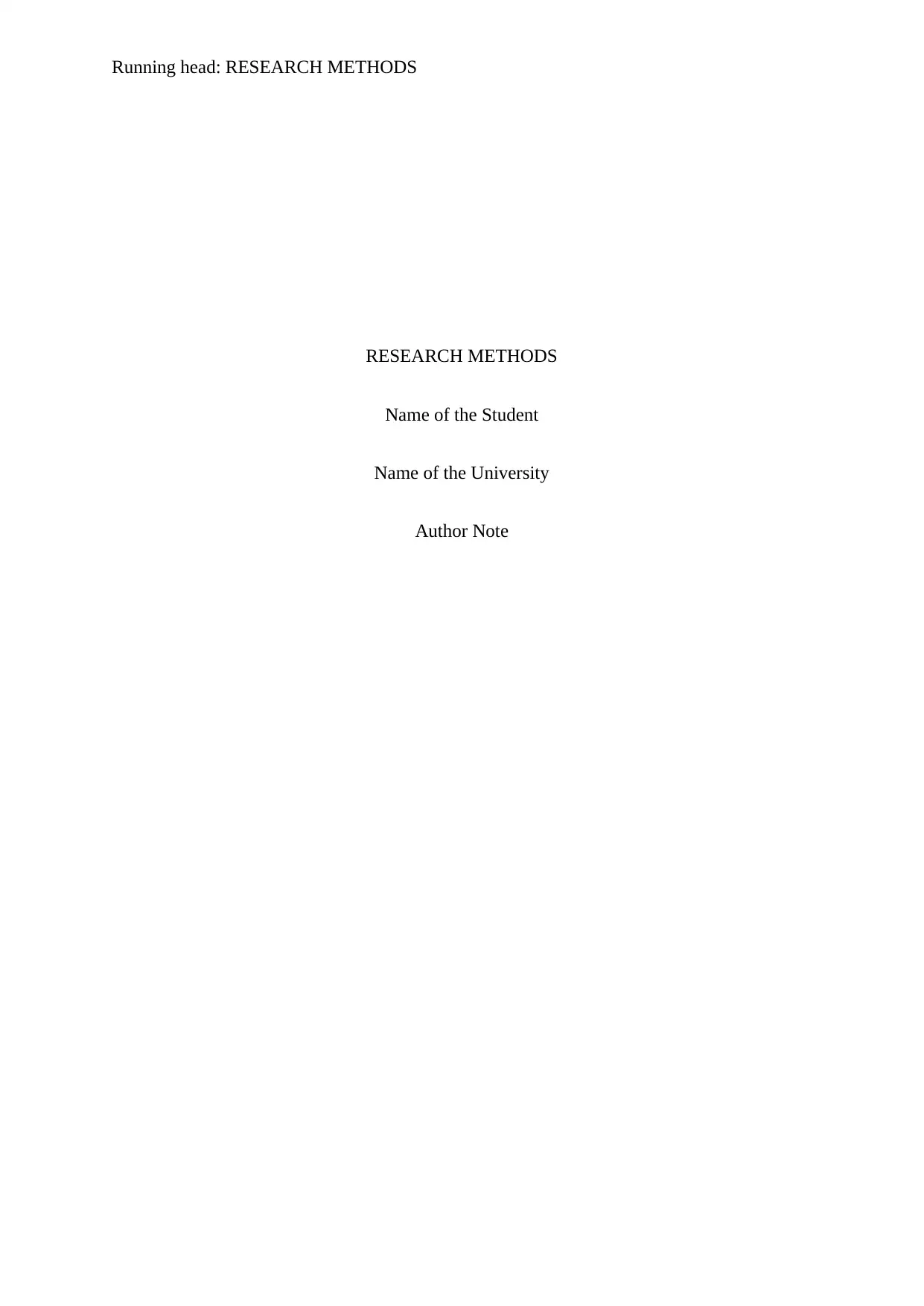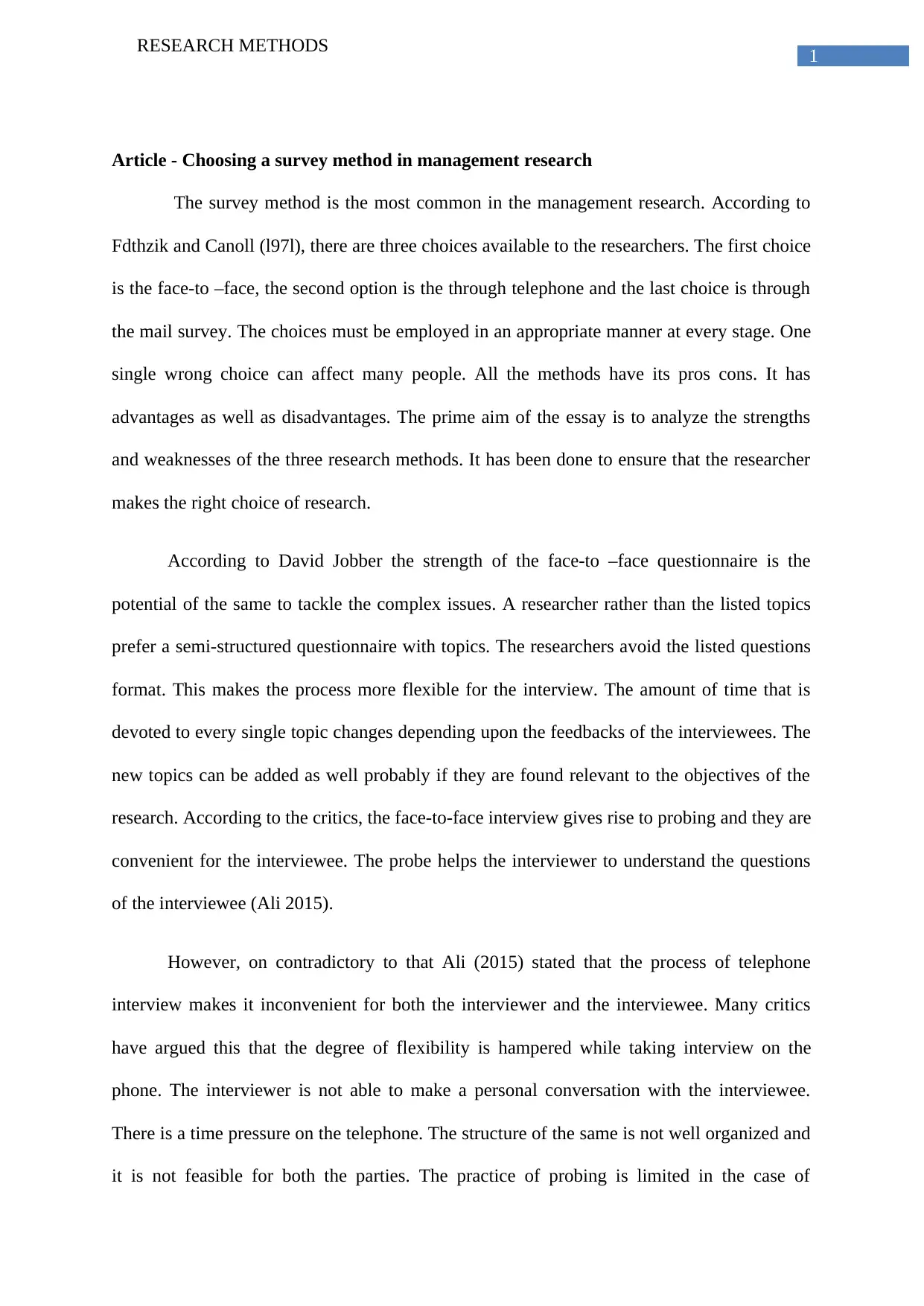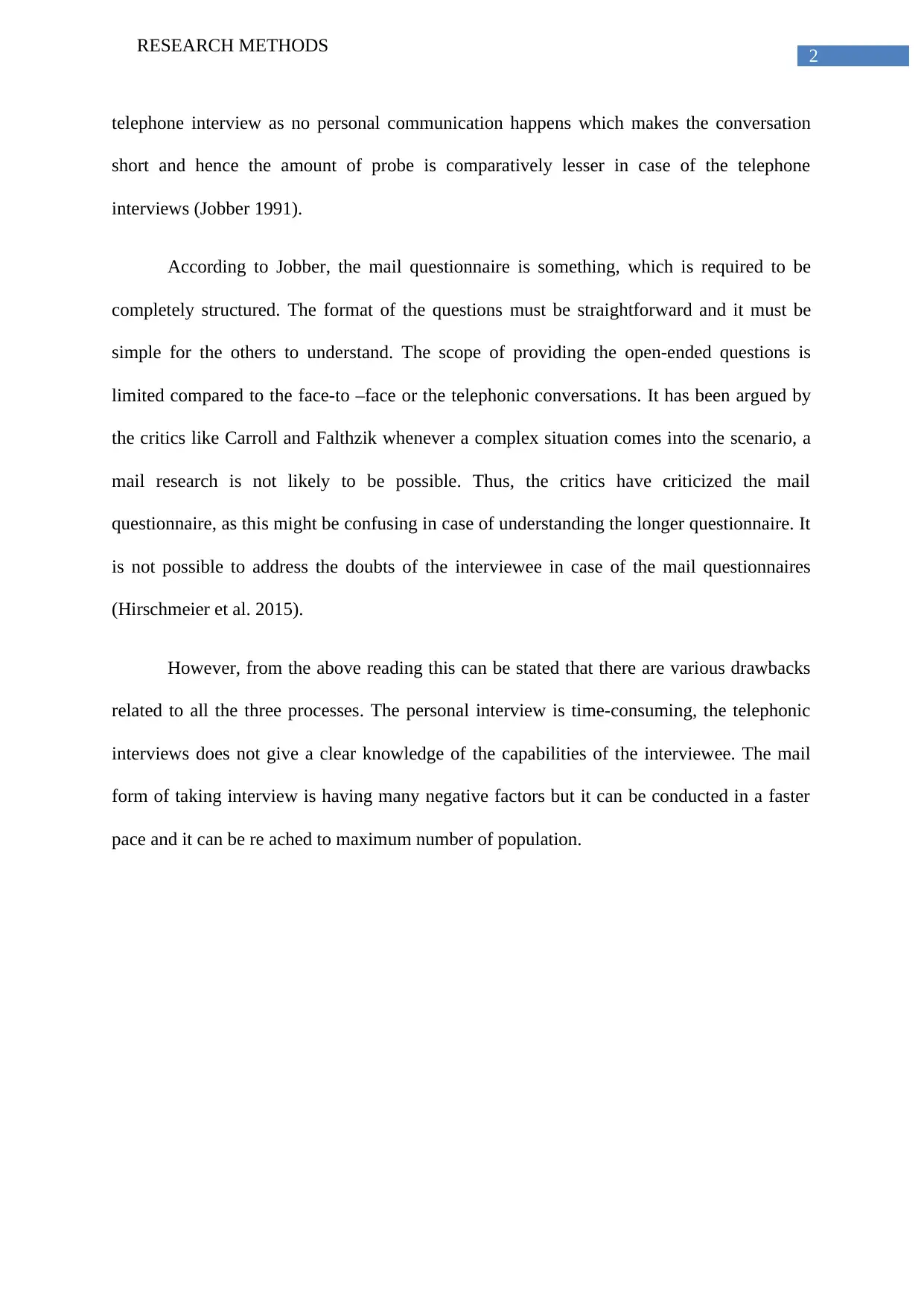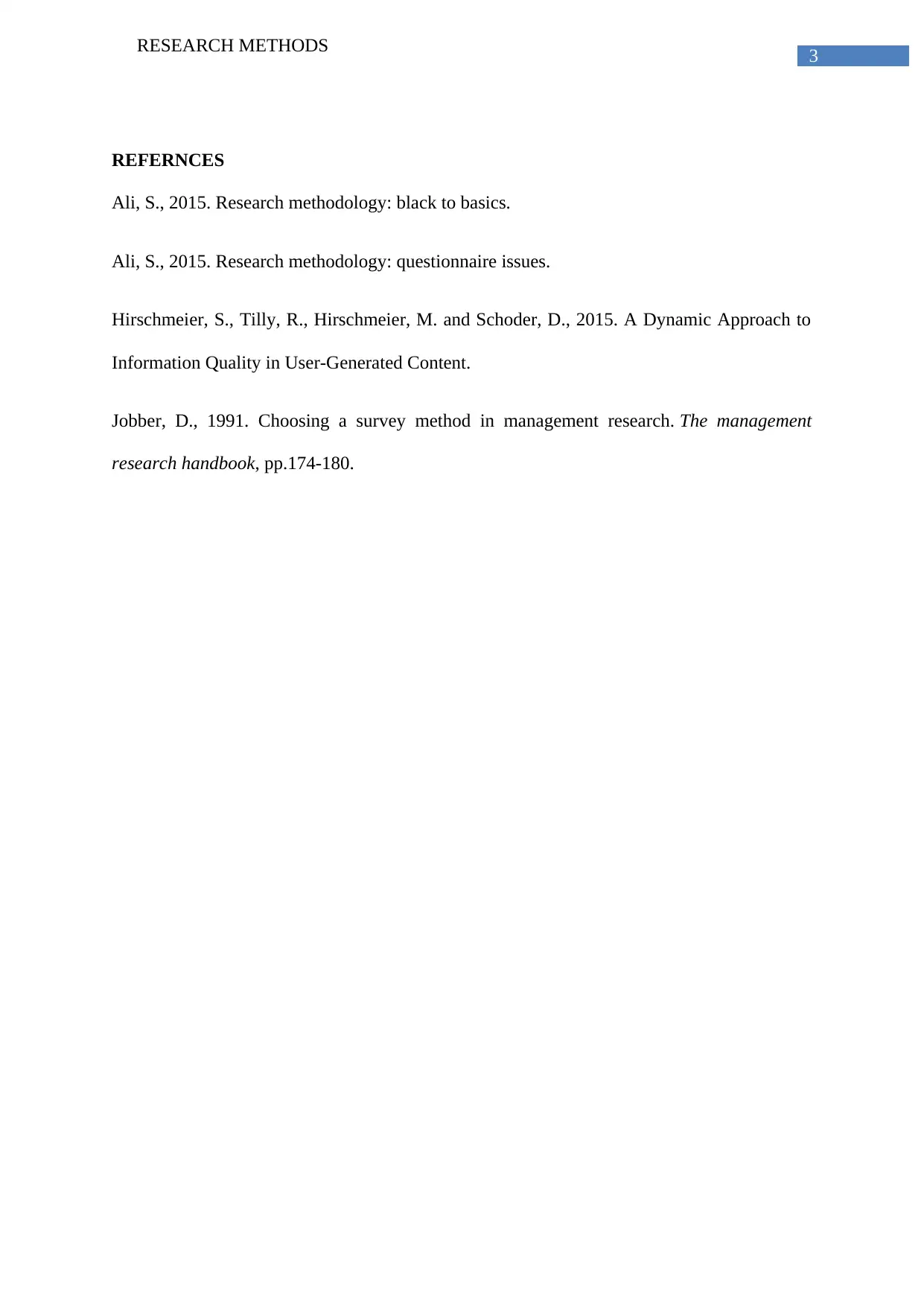Research Methods: Analysis of Survey Methods in Management Research
VerifiedAdded on 2020/03/23
|4
|706
|344
Report
AI Summary
This report analyzes three common survey methods used in management research: face-to-face interviews, telephone surveys, and mail questionnaires. The analysis highlights the strengths and weaknesses of each method. Face-to-face interviews offer flexibility and the ability to address complex issues, but they are time-consuming. Telephone interviews provide less flexibility and lack personal interaction, potentially limiting probing. Mail questionnaires are highly structured and efficient for reaching a large population, but they are not suitable for complex topics and lack the ability to clarify doubts. The report references key sources to support the evaluation of these methods, aiming to guide researchers in selecting the most appropriate survey method for their specific research objectives, considering factors such as time constraints, complexity of the topic, and the need for flexibility.
1 out of 4











![[object Object]](/_next/static/media/star-bottom.7253800d.svg)